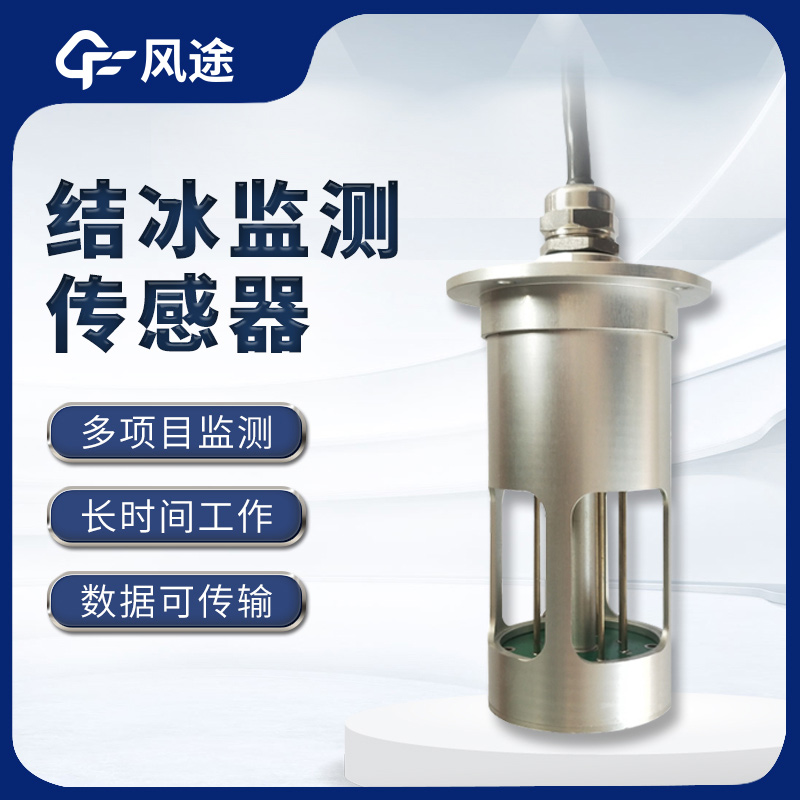Shandong Fengtu IOT Technology Co., Ltd
Sales Manager:Ms. Emily Wang
Cel,Whatsapp,Wechat:+86 15898932201
Email:info@fengtutec.com
Add:No. 155 Optoelectronic Industry Accelerator, Gaoxin District, Weifang, Shandong, China

Sales Manager:Ms. Emily Wang
Cel,Whatsapp,Wechat:+86 15898932201
Email:info@fengtutec.com
Add:No. 155 Optoelectronic Industry Accelerator, Gaoxin District, Weifang, Shandong, China
time:2024-12-05 09:16:32 source:Weather Station viewed:418 time
Icing on transmission lines can lead to numerous serious consequences, threatening the safety of the power system and the efficiency of power transmission. The thickening of ice layers will cause excessive load on conductors, resulting in sagging and breakage, which may lead to circuit breaks; transmission towers are also overburdened, facing the risks of tilting and collapsing, and are prone to triggering large-scale power outages. Ice covering insulators reduces insulation performance, and flashover accidents are likely to occur when it is humid, causing line short-circuit tripping; icing on lines also increases the equivalent resistance. According to Joule's law, power transmission losses will increase accordingly, wasting electrical energy.
Therefore, power departments often take anti-icing and de-icing measures, such as installing anti-icing devices and using thermal and mechanical de-icing methods, to ensure the stable operation of lines.
The Ice Monitoring Equipment adopts microwave detection technology. By utilizing the differences in the feedback of microwave signals by ice, water, and air, it accurately monitors the icing information in the sensor area. Based on the signal intensity and ice accumulation distribution, it calculates the icing thickness. Installed on power line towers, it enables real-time monitoring of the icing conditions of surrounding power lines.
Technical specifications: The detection resolution reaches 0.01 mm, leaving no trace of even the slightest ice layer; it can measure ice accumulation up to 30.00 mm thick; with RS485 communication and the Modbus RTU protocol, data transmission is stable and fast; the working voltage is 5 VDC, and it can work normally in an environment ranging from -40 °C to 85 °C. The power consumption is as low as 1 W, and 15 W during ice melting. The protection level reaches IP67, fearless of wind and rain erosion.
The Ice Monitoring Equipment can determine the ice accumulation thickness and identify six weather conditions; it is equipped with dual temperature measurement points for precise temperature control; it supports timed and master-slave data transmission; it has a unique identification number, which is suitable for large-scale monitoring. During ice melting, it adopts a mode of heating for 10 seconds and pausing for 25 seconds, and automatically stops when the temperature reaches 50 °C, which is efficient and energy-saving. Paired with solar power and 2G communication, power operation and maintenance become more convenient.

Measurement of wind speed and direction plays a crucial role in industrial production and scientific experiments, especially in the field of wind power, and their data is of inestimable value for the operation and maintenance of wind power equipment. In recent years, with the continuous progress of...
Landslide monitoring equipment, as an important tool for ensuring geological safety, can monitor the characteristics of landslide masses and related environmental factors, providing crucial data for analyzing landslide risks.Displacement monitoring equipment: The GNSS monitoring system utilizes the...
Meteorological environmental monitoring system refers to a series of monitoring equipment and instruments to carry out real-time, accurate and sustainable monitoring and analysis of the atmosphere, water, soil, vegetation, animals and other elements of the natural environment, in order to reveal the...
What is the meaning of water and rain situation? In fact, the water and rain situation refers to the water and rain situation. Water condition refers to the condition of river water, such as river flow, water level, flow rate, etc.; while rain condition refers to the condition of rainfall in a certa...